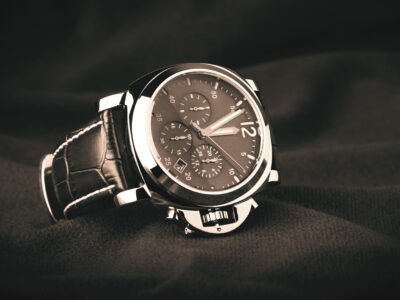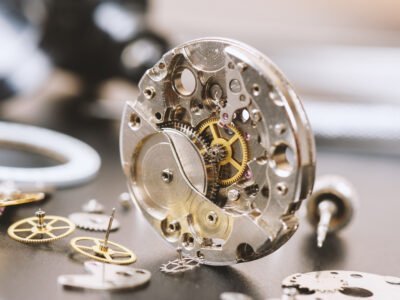Perpetual calendar watches are among the most complex and fascinating complications in the watchmaking world. They are designed to take into account the varying lengths of months and leap years, allowing the user to accurately keep track of the date without having to manually set the timepiece. For centuries, perpetual calendar wristwatches and pocket watches alike have been a source of fascination and have been appreciated by watch connoisseurs worldwide.
In this blog post, we will explore what perpetual calendar watches are and why they are so desirable. We will examine the various types of perpetual calendars, the complications associated with them, and the various ways in which they are used.
By the end of this post, you will have a better understanding of perpetual calendar watches and what makes them so unique.
How Perpetual Calendar Watches Work
Perpetual calendar watches are a type of timepiece that can keep track of the date and day of the week without needing to be manually adjusted – even during a leap year! They are powered by a sophisticated mechanism that takes into account the varying length of each month, as well as leap years.
The mechanism is programmed to recognize the length of the month and make the necessary adjustment to the calendar. Compare this to a complete calendar watch which has the date and time. On a complete calendar watch you need to manually reset the day of the week and month each month.
With a perpetual calendar movement, you don’t have to worry about resetting the calendar ever again! Not only does this save you time (no pun intended!) but it also ensures the accuracy of your watch.
They’re based on the Gregorian calendar where the dates vary. As a result, the watches will also account for the year 2100 when there won’t be a leap year. This is so real time and the solar calendar can coincide and reset the calendar!
Key Parts of a Perpetual Calendar Watch
The perpetual calendar mechanism can keep track of the number of days in a month, and how long a year is, including leap years. Two of the key parts of a perpetual calendar complication are the perpetual calendar and the moon phase display. The perpetual calendar model, which requires periodic manual adjustment, informs the user of the exact date, day, month, and year.
The moon phase indication, meanwhile, provides information on the current phase of the moon and its progress through the cycle. Together, these parts make it possible for the watch to keep accurate track of time without the need for manual resetting.
What Settings Are Needed to Operate a Perpetual Calendar Watch?
Most perpetual calendar mechanisms are powered by a mechanical memory and require a few settings to be set in order for them to run correctly.
Firstly, the crown needs to be pulled out to its furthest position and the date adjusted to the current date. Secondly, the hour and minute hands need to be set to the correct time. Finally, the watch must be correctly synchronized with the month and year by setting the month and year correctly.
Once these settings are made, the watch should be able to accurately track the day, date, month, and year for many years without requiring any further adjustment, unlike other mechanical watches.
Types of Perpetual Calendar Watches
The main type of perpetual calendar function that you should know about is the annual calendar. An annual calendar means more complicated timepieces than a traditional calendar or chronograph watch. This type of watch is able to track the days of the month and automatically adjust for months with fewer (or more) days than the other months, also sporting a leap year indicator.
It is also able to recognize leap year, so it will make the necessary changes when February has an extra day. In addition to tracking the days, an annual calendar watch also tracks the months and years, meaning it will not become obsolete and will never need to be adjusted manually.
How to Set a Perpetual Calendar Watch
The fifth step in understanding perpetual calendar watches is learning how to set a perpetual calendar watch. Perpetual calendar watches are programmed to adjust for long and short months, as well as leap years. To set a perpetual calendar watch, the date and time must be set correctly. If the date is not set correctly, the watch will not correctly display the correct date.
To set the date, the crown must be pulled out to the date setting position, then the date can be adjusted with the crown or the buttons on the side of the watch. After setting the date, the crown should be pushed back in. Finally, the time can be set by pulling out the crown and turning it clockwise or counter-clockwise until the time is set correctly.
Benefits of Owning a Perpetual Calendar Watch
Owning a perpetual calendar watch is an undeniably convenient way to stay up-to-date with the current date and time. Not only do these watches feature accurate timekeeping, but they also have the unique ability to automatically adjust themselves between months and years of different lengths.
This means that you don’t have to manually adjust the calendar on your watch to account for leap years or the extra day added to February. Furthermore, perpetual calendar watches are stylish and sophisticated pieces of fashion that look good on any wrist. Here are some benefits of owning a perpetual calendar watch:
1. Automatically adjusts for leap years and months of different lengths.
2. Accurate timekeeping.
3. Style and sophistication.
4. Ability to keep up with the current date.
5. Durable and built to last.
6. Variety of designs and styles.
Care and Maintenance for a Perpetual Calendar Watch
Perpetual calendar watches require special care and maintenance in order to keep them accurate and functioning properly. These watches are special because they automatically adjust for leap years and other irregularities, so it’s important to keep them in top condition. Here are seven tips for caring for your perpetual calendar watch:
1) Keep the watch away from strong magnetic fields;
2) Avoid sudden temperature changes;
3) Clean the watch regularly with a soft cloth;
4) Have the watch serviced every four to five years;
5) Handle the watch with care;
6) Store the watch in a cool, dry place;
7) Replace the watch battery when needed.
Following these steps will ensure your perpetual calendar watch will stay accurate and reliable for many years to come.
Price Range for Perpetual Calendar Watches
Perpetual calendar watches are some of the most sought-after timepieces, and their prices reflect this demand. Generally speaking, perpetual calendar watches can range anywhere from about $1,000 USD to $100,000 USD.
For more basic models, you can expect to pay in the lower end of the price range, while more complex designs often come with a hefty price tag.
For instance, a limited-edition model of the Rolex Oyster Perpetual Day-Date or a Patek Philippe Ref. 5396 might set you back several tens of thousands of dollars. However, if you shop around, you can find some great deals on pre-owned perpetual calendar watches.
Perpetual Calendar Watches are Magical
In conclusion, perpetual calendar watches are an impressive feat of horology and a great addition to any watch collection. The combination of advanced mechanics and the timeless sophistication of a classic watch make a perpetual calendar a must-have timepiece.
With the wide variety of designs available, you can find a watch that fits your style and budget. While they may be a bit of an investment, they are sure to last you a lifetime.



